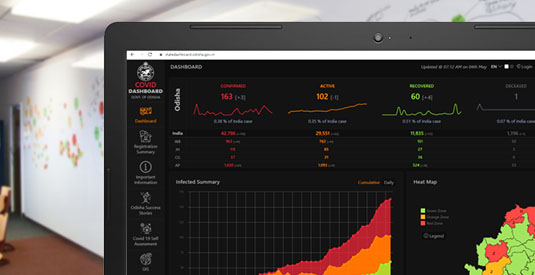
Six weeks post January 30, 2020, when the World Health Organization (WHO) categorized and declared COVID-19 outbreak as a global pandemic, it became evident that the crisis has started circling the globe. Coronavirus is no longer just a public-health emergency of international concern (PHEIC), and its impact is certainly unimaginably greater than the 2002–2003 SARS outbreak.
However, one thing that I understood was that the COVID-19 emergency is happening in a vastly digitized, connected and intelligent world. This has created an opportunity for tech companies to aggregate and analyse real time data to help governments navigate a scenario they have never experienced before. Data provides tremendous potential to trace and contain the source of the virus, predict its future spread, and plan amidst an environment of chaos and uncertainty.
We and other tech giants in general invested in unified ICT interventions to secure vast troves of data from the frontlines of COVID response. Aggregation of data around travel history of suspect carriers, migrant influx, testing efforts and infrastructure readiness, assists State and other Governments, day in and day out, in providing a single source of truth about the rapidly evolving situation.
Massive efforts, teamwork and dedication even from the comforts of our homes, have been mobilized to continuously pull data from various sources and gain a more comprehensive understanding of the disease, during the different stages of the pandemic.
(Stage 1, when usually the cases are reported of people who have had travel history to an already affected country; Stage 2, the stage of the local transmission, when it is comparatively easier to trace the spread and quarantine people; Stage 3 is the community transmission, when the source of the infection is quite untraceable, and infections happen in public; Stage 4 is the practically uncontrollable spread)
I strongly believe that at the core of the viral spread and all the efforts, there has been a small silver lining: the rapid and exponential creation of new data, which then gets integrated, cleaned and harmonized for better comprehending COVID-19 from different angles and data points.
In the areas of pandemic preparedness, data analytics, charting out exit strategies, deploying tech solutions for nation-building and resolving this crisis strategically, various companies have been enabling State Governments and central ministries, who have to cope up with multiple databases in different formats.
Once the lockdown restrictions get relaxed, then will commence one of the most comprehensive exercises to map migrant workers, scattered across the country, especially if they’re coming from highly infected states. That is also when data will help ascertain capacity to isolate and test such population. Also, infections might peak at some time and infrastructure in hospitals needs to be ready. Data helps Government in allocating limited resources, such as ventilators, to minimize deaths during peak infections.
As for the citizens, data visualizations have been providing necessary insights into the spread of the disease, which is helping them to respond more effectively. Moreover, data has also enhanced consumption of content around COVID, while creating awareness on social distancing. Information dissemination through Government channels such as dashboard, mobile app or whatsapp bots helps address fake rumours and assures citizens on the efforts being taken to tackle the situation.
That apart, self-health assessments, through app, bot or call centre, addresses anxieties of citizens – thus easing the burden on hospitals and allowing them to focus on genuine cases.
We had the foresight to understand that technology could prove crucial in enabling governments to closely monitor the COVID-19 crisis. Against this backdrop, we conceptualized and implemented an end-to-end ICT solution stack, for the Odisha and Bihar Government, whose progressive attitude have been giving us the confidence to use data driven insights for pandemic response. Each passing day, we remain invested in making these systems more robust, scalable and responsive to the uncertain times ahead.
Data and analytics solves all that’s too much for humans to comprehend and analyze on their own, thus giving rise to “Pandemic Analytics” in the case of COVID-19, which is the modern and technological way to “combat a problem as old as humanity itself: the proliferation of disease.”
The author is Priyadarshi Nanu Pany, founder & CEO of CSM Technologies. This article was originally published on his Medium profile.


























































We will verify and publish your comment soon.